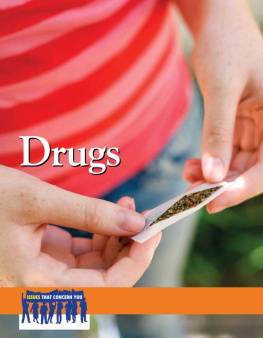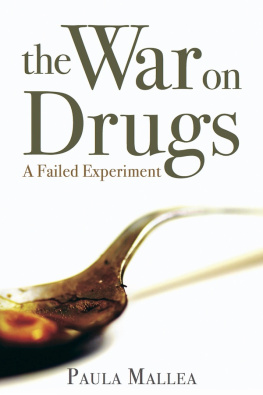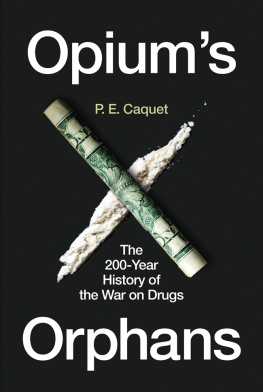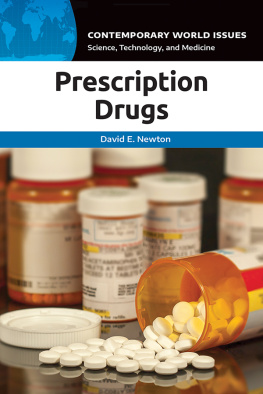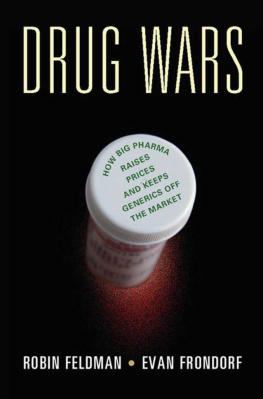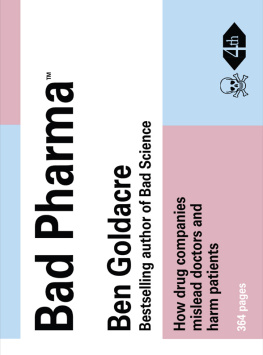First published 2015 by Paradigm Publishers
Published 2016 by Routledge
2 Park Square, Milton Park, Abingdon, Oxon OX14 4RN
711 Third Avenue, New York, NY 10017, USA
Routledge is an imprint of the Taylor & Francis Group, an informa business
Copyright 2015, Taylor & Francis.
All rights reserved. No part of this book may be reprinted or reproduced or utilised in any form or by any electronic, mechanical, or other means, now known or hereafter invented, including photocopying and recording, or in any information storage or retrieval system, without permission in writing from the publishers.
Notice:
Product or corporate names may be trademarks or registered trademarks, and are used only for identification and explanation without intent to infringe.
Library of Congress Cataloging-in-Publication Data
Boggs, Carl.
Drugs, power, and politics : narco wars, big pharma, and the subversion of democracy / Carl Boggs.
pages cm
Includes bibliographical references and index.
ISBN 978-1-61205-870-2 (hardcover : alk. paper) ISBN 978-1-31563-507-1 (eBook)
1. Drug abuseUnited States. 2. NarcoticsPolitical aspectsUnited States. 3. Drug trafficUnited States. 4. Drug legalizationUnited States. 5. Pharmaceutical industryUnited States. I. Title.
HV5825.B624 2015
362.290973dc23
2014035152
ISBN 13: 978-1-61205-870-2 (hbk)
ISBN 13: 978-1-61205-871-9 (pbk)

To critically explore the drug phenomenon in American society, in all its mysterious complexity, the author must be ready to investigate multiple realms of public life, from social policy to corporate power, law enforcement, health and medicine, foreign policy, political ideology, and the role played by government in the lives of more than 300 million people. In the early twenty-first century it has become incontrovertible that the War on Drugs, going back to the early twentieth century and recycled in its current version by President Richard Nixon in 1971sometimes depicted as Americas longest warintersects with all these realms. In certain areas (politics, social policy, medicine, law enforcement) the drug war has been nothing short of transformative. A guiding motif of this book is that the political outlook behind this warprohibitionist, moralizing, intolerant, deceitful, destructivecarries forward a deep authoritarian logic, as seen in widening power of the federal bureaucracy, police, security state, prison complex, and border operationsall coinciding with a perpetual narrowing of the public sphere.
Driven by an ensemble of wealthy and powerful interests, the drug war has caused more damagepolitically, economically, and sociallythan could ever be attributed to drug consumption as such. It has done incalculable harm, but this crusade has done nothing to reduce drug use or ameliorate problems of abuse, overdose, and addictionsurely nothing to justify the vast material and human resources poured into the prohibition agenda for more than forty years. Its destructive consequenceslucrative black markets, growth of criminal syndicates, political corruption, elevated crime and violence, worsening addiction and related drug problemsare the predictable result of coercive governmental policy in search of a mythological drug-free society. Nowhere in American political life is the gulf between illusion and reality, propaganda and fact, pretense and outcome, more flagrant than in the case of drug politics, where public discourse is so colonized by a bundle of platitudes and myths. Sadly, a good deal of the carnage emanating from the drug war has been obscured, lost in a maze of fearmongering narratives and images that saturate American media culture.
Costing in the neighborhood of $20 billion yearly, the War on Drugs nourishes some of the darkest features of American society, having become a crusade heavily reliant on monolithic discourse that subverts the norms and practices of democratic politics. It is a policy built on elevated governmental power, with its silencing of critics, curtailing of personal freedoms, ruining of individual lives, and wasting of massive tax revenues. The very motif of continuous warfare, an enduring feature of US history, is based on a righteous national mission against enemies that must be confronted and vanquished. Warfare demands generous use of institutional power and military forcethat is, an aggressive, interventionist politics. This special American undertaking requires the combined resources of federal agenciesthe FBI, the CIA, the DEA, the ATF, and Customs, as well as the Pentagonto confront an assemblage of traffickers, pushers, gangs, and cartels. The large Mexican cartels in particularorganized, affluent, militarized, and globalizedrepresent the ideal nemesis, a convenient target of drug interdictions, cross-border police raids, crop eradications, surveillance operations, and mass arrests. As United Statesengineered warfare spans much of the global terrain, from Colombia to Mexico, Central America, and Afghanistan, the already-swollen national-security state gains new legitimation and power.
The War on Drugs helps reinforce ongoing trends in the direction of authoritarian politics, as military interventions, border mobilizations, counterterrorism operations, high-tech surveillance, and mass incarceration become the norm. A pressing question is whether even the most truncated forms of democracy can survive tendencies that, on the whole, seem to go unnoticed within the corporate media. Warfare against Mexican cartels, which have moved into Central America and parts of the United States, only feeds the militarization of antidrug politics. Counternarcotics activity greatly intensified during the Felipe Caldern presidency, spanning 2006 to 2012, at a time when tens of thousands of deaths resulted from the spread of military combat into the streets of several Mexican cities. For its part, Washington provided generous economic and military aid to Mexican police and armed forces, stepping up antidrug incursions along the borders. High-level arrests took at least fifteen cartel leaders out of circulationoperations touted by American politicians and the media as mortal blows to the syndicates, even as illegal drugs flow outward to meet huge US markets continued apace.
Drug interdiction requires sophisticated intelligence and surveillance work that now includes systematic overflights by unmanned drones and other aircraft. Used widely in Afghanistan, Pakistan, Yemen, and elsewhere for strictly military purposes, drones are now being deployed for information-gathering, domestically and globally. Though in 2014 relatively few in number, the US drone fleet is expected to reach 30,000 by 2020, most planes equipped with state-of-the-art cameras to detect personal identities and movements from 20,000 feet or more. First operated by the Pentagon and the CIA, by 2013 drones were being ordered by the DEA as well as Customs and Border Patrol, used for live feeds to dozens of ground stations. Dronessome likely to be armedare also set to be deployed at military bases across the United States. According to the Pentagons global strike doctrine, remote-controlled planes will soon be capable of engaging high-value targets anywhere on the globe. The implications of this technology for expansion of governmental surveillance powersfor bolstering the security stateshould be obvious.






